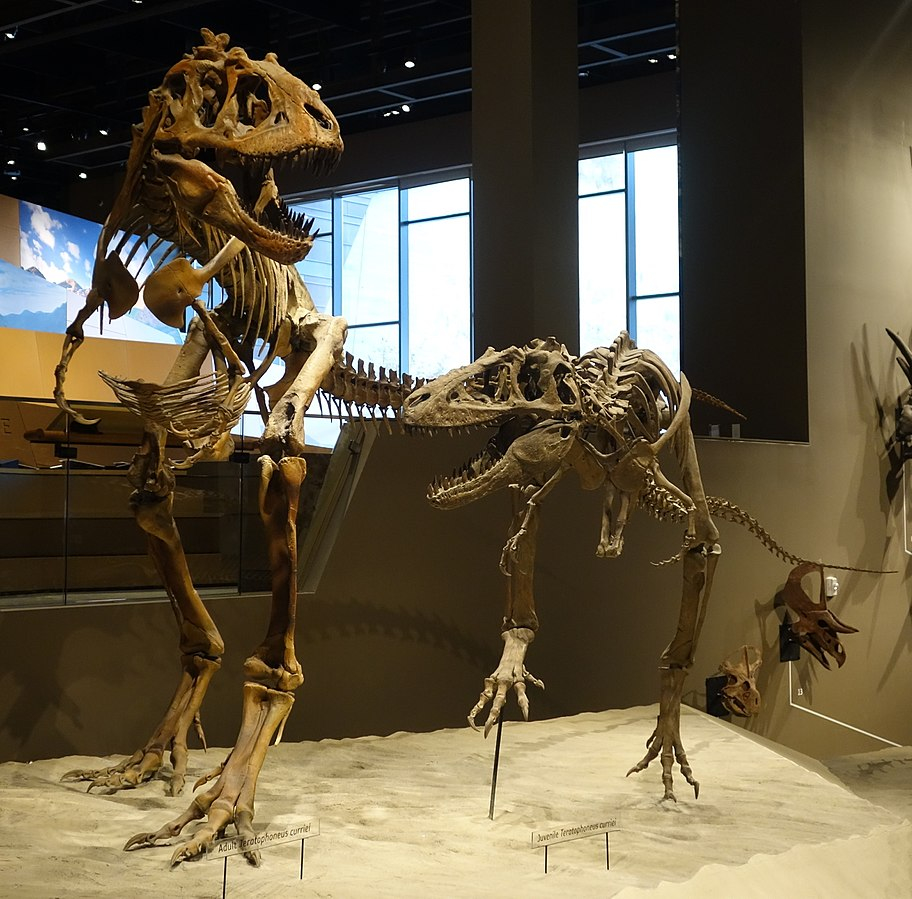T. rex dinosaur relatives found buried together
Were these Tyrannosauridae social creatures?

Several Teratophoneus curriei dinosaurs, which belong to the same family as the bigger Tyrannosaurus rex, have been found in Utah, USA, buried and fossilized together. According to science writer Tom Whipple, “These dinosaurs were, the scientists concluded, killed together in a single event, probably a flood.”1
We agree. There you have it, the shortest article on our website!
Of course, there is more to the story. The flood hypothesis is but one of the ideas put forward by the scientists, although it is the preferred one.2
Spectacular find or speculative minds?
Found in the Rainbows and Unicorns Quarry (RUQ) in southern Utah, the dinosaurs were said to have lived in a climate with “an overall wet (humid), tropical to subtropical wet-dry setting, with episodic longer dry spells.”2 This kind of doublethink (from wet, to wet-dry, to dry) makes it very easy to incorporate future findings into the evolutionary story—whether they confirm or seemingly contradict it, the story can be spun either way.
Another example of doublethink comes from Steve Brusatte, of Edinburgh University: “This site is pretty convincing evidence that tyrannosaurs were social animals that lived and travelled in packs, at least some of the time”.1 In other words, they were social, apart from when they were not. This is not to criticize, but to highlight that we are dealing with past climate and behaviour, things we did not observe; of course this is rife with speculation—it is not the scientific method at work.
The scientists also state in their paper, “these tyrannosaur mass-burial sites could be part of an emerging pattern throughout Laramidia [the western part of north America] reflecting innate tyrannosaurid behavior such as habitual gregariousness [being together in groups].”2

The researchers explain that catastrophes can drive animals together which normally prefer to be on their own. They cite droughts (the need to search for water) and fire (the need to avoid the flames) as examples. In neither case do animals necessarily congregate. Droughts and fire may very well disperse animals, but even when they do come together (where there is water or no flames, respectively) those animals would not be the ones that die—rather, they are the ones that live! Only animals that already behave socially would search for water together or flee from flames together.
What about a flood?
Indeed, fleeing from surging waters should be added to the list, and actually seems a more natural explanation for the fossil find. Land-dwelling creatures will naturally avoid being caught in a torrent of violently approaching water, and systematically run in the opposite direction. CMI has written a number of times on dinosaur stampedes.3 The resultant dinosaur trackways share common features: footprints of multiple dinosaurs together moving in the same direction.
You may think that dinosaur footprints found together are nothing special. As said, aren’t they ‘common’?4
Let’s assess each part of the argument separately:
- Footprints
Normally when we talk about dinosaur fossils, we think of the skeletal bones that have been preserved. However, there are also ‘trace fossils’. Think of it this way, if you were to make a foot imprint on the ground, would you expect it to last? No, such an exposed impression will erode over time, due to wind and/or water erosion. For it to be preserved it must be covered quickly.
- of multiple dinosaurs together
We see animals living together in groups nowadays, e.g. a flock or a herd, so why not dinosaurs? True. How about at least eight different kinds of dinosaurs?
- moving in the same direction
This means we are not talking about grazing dinosaurs. Rather, these trackways indicate they were on the move. And apparently they were moving with a purpose. Perhaps fleeing from a flood?
So what about the burial of these Teratophoneus dinosaurs? Fossils don’t come with an attached document describing their history. Although we can definitely make empirical statements about the fossils bones (how many orientated in which way, what size, their weight, composition, etc.), we cannot dogmatically say how these dinosaurs lived, died, or even where they died. Of course we can try to infer some things, but we did not observe these events, since they all happened in the past, without human eye-witness reports.5
Conclusion
According to the biblical account of Noah’s Flood, “everything on the dry land in whose nostrils was the breath of life died” (Genesis 7:22). Most of the fossil creatures we discover today provide evidence that they died and were buried catastrophically. This evidence is exactly what is to be expected from the account of the global Flood.
In addition, rapid sedimentation during the Flood aided in the burial of many exquisitely preserved fossils, including impressions of the skin.
So yes, we agree, a flood is the best explanation for the fossilized Teratophoneus dinosaurs. Not just any flood, but the biblical Flood that engulfed the whole world.
References and notes
- Whipple, T., Bones show T. rex may have hunted in a pack, thetimes.com, 21 April 2021. Return to text.
- Titus, A., et al., Geology and taphonomy of a unique tyrannosaurid bonebed from the upper Campanian Kaiparowits Formation of southern Utah: implications for tyrannosaurid gregariousness, PeerJ 9:e11013, 19 April 2021 | DOI:10.7717/peerj.11013 Return to text.
- Simply search creation.com on the words ‘dinosaur stampede’. Return to text.
- This is a deliberate equivocation (doublespeak): I have use the word ‘common’ in two different ways, but similar to the previously mentioned doublethink, the equivocation fallacy is all too common (!) with evolutionists. Return to text.
- We have an eye-witness account from One who was there and knows everything, but the Bible does not disclose the particular details about the fossil creatures described here, or many others for that matter. Return to text.




Readers’ comments
Comments are automatically closed 14 days after publication.